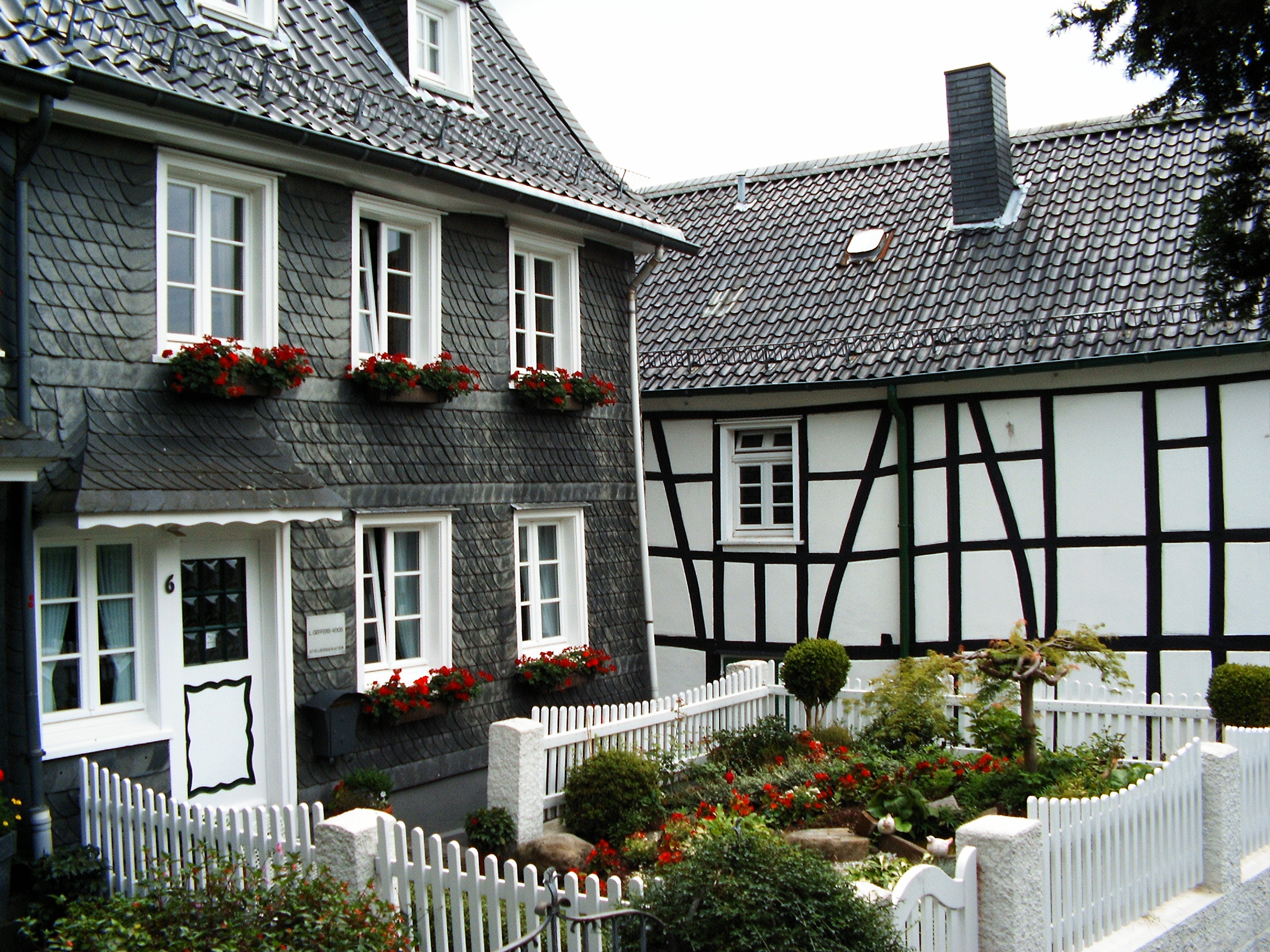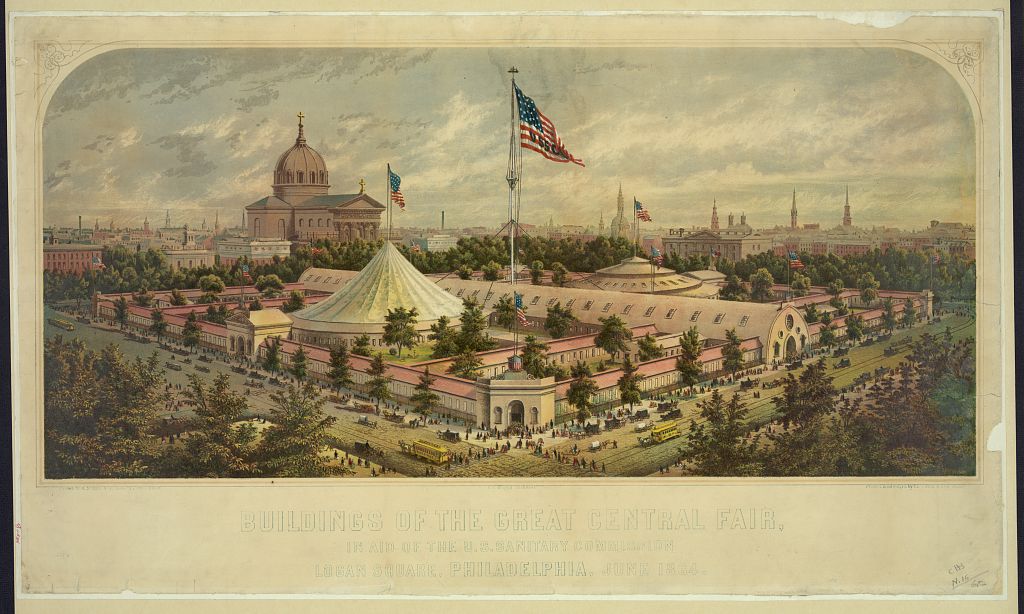|
Hermann Krupp
Hermann Krupp (15 February 1814 – 25 July 1879) was an Austrian entrepreneur, founder of the Austrian branch of the Krupp family. Life He was born in Essen, Germany, as the third child of Friedrich Krupp and his wife, Therese Wilhelmi. His brother was Alfred Krupp. After finishing his studies at the in Essen, he was apprenticed in Solingen. During his spare time, he worked at his father’s shop. He became the mechanical director of in Berndorf, which was founded by his brother, Alfred. In 1847 he met with Marie Baum, daughter of the rich Daniel Baum, whom he married at the same year. They lived near the Berndorfer Metallwarenfabrik in every summer and in Vienna, opposite the Metallwarenfabrik's city offices. Hermann Krupp was Protestant, while his wife Marie was Catholic. To reflect it, sons were Protestants, daughters became Catholics. They had six children. Hermann Krupp was fond of his work, and had a good relationship with his employee, who were loyal to him. Conseq ... [...More Info...] [...Related Items...] OR: [Wikipedia] [Google] [Baidu] |
Krupp Family
The Krupp family (see pronunciation), a prominent 400-year-old German dynasty from Essen, is notable for its production of steel, artillery, ammunition and other armaments. The family business, known as Friedrich Krupp AG (Friedrich Krupp AG Hoesch-Krupp after acquiring Hoesch AG in 1991 and lasting until 1999), was the largest company in Europe at the beginning of the 20th century, and was the premier weapons manufacturer for Germany in both world wars. Starting from the Thirty Years' War until the end of the Second World War, it produced battleships, U-boats, tanks, howitzers, guns, utilities, and hundreds of other commodities. The dynasty began in 1587 when trader Arndt Krupp moved to Essen and joined the merchants' guild. He bought and sold real estate, and became one of the city's richest men. His descendants produced small guns during the Thirty Years' War and eventually acquired fulling mills, coal mines and an iron forge. During the Napoleonic Wars, Friedrich Kr ... [...More Info...] [...Related Items...] OR: [Wikipedia] [Google] [Baidu] |
Essen
Essen (; Latin: ''Assindia'') is the central and, after Dortmund, second-largest city of the Ruhr, the largest urban area in Germany. Its population of makes it the fourth-largest city of North Rhine-Westphalia after Cologne, Düsseldorf and Dortmund, as well as the ninth-largest city of Germany. Essen lies in the larger Rhine-Ruhr Metropolitan Region and is part of the cultural area of Rhineland. Because of its central location in the Ruhr, Essen is often regarded as the Ruhr's "secret capital". Two rivers flow through the city: in the north, the Emscher, the Ruhr area's central river, and in the south, the Ruhr River, which is dammed in Essen to form the Lake Baldeney (''Baldeneysee'') and Lake Kettwig (''Kettwiger See'') reservoirs. The central and northern boroughs of Essen historically belong to the Low German ( Westphalian) language area, and the south of the city to the Low Franconian (Bergish) area (closely related to Dutch). Essen is seat to several of the re ... [...More Info...] [...Related Items...] OR: [Wikipedia] [Google] [Baidu] |
Friedrich Krupp
Friedrich Carl Krupp (Essen, 17 July 1787 – Essen, 8 October 1826) was a German steel manufacturer and founder of the Krupp family commercial empire that is now subsumed into ThyssenKrupp AG. Biography After the death of his father, he was brought up by his grandmother Helene Amalie Krupp, who had, in 1800, purchased the Sterkrade Works. Here Friedrich endeavored to make cast steel, the secret of which was carefully guarded in England. With Gottlob Jacobs, an engineer, Krupp made his first experiments at the Sterkrade Works, and after the sale of the plant in 1808 continued his attempts independently at Essen. In 1810 he founded a small forging plant near Essen, and in 1815 formed a partnership with Friedrich Nicolai for the production of cast steel, a product which was found excellent for certain purposes, such as mint dies, stamps for buttons, etc. Yet the demand was not sufficient to keep the works in operation, and soon after 1820 Krupp was obliged to give up his house ... [...More Info...] [...Related Items...] OR: [Wikipedia] [Google] [Baidu] |
Therese Krupp
Therese Krupp (1790–1850) was a German industrialist.Antonius Lux (Hrsg.): Große Frauen der Weltgeschichte. Tausend Biographien in Wort und Bild. Sebastian Lux Verlag, München 1963 She was married to Friedrich Krupp and took over the Krupp The Krupp family (see pronunciation), a prominent 400-year-old German dynasty from Essen, is notable for its production of steel, artillery, ammunition and other armaments. The family business, known as Friedrich Krupp AG (Friedrich Krup ... company after his death in 1826. She is referred to as the matriarch of the Krupp dynasty and credited with the preservation of the Krupp industries, which was in a very bad state at the time of her takeover, a development she managed to turn around. References {{DEFAULTSORT:Krupp 1790 births 1850 deaths 19th-century German businesswomen German industrialists People of the Industrial Revolution Krupp family Businesspeople from Essen ... [...More Info...] [...Related Items...] OR: [Wikipedia] [Google] [Baidu] |
Alfred Krupp
Alfred Krupp (born ''Alfried Felix Alwyn Krupp''; Essen, 26 April 1812 – Essen, 14 July 1887) was a German steel manufacturer and inventor; the largest arms supplier of his era, which earned him the nickname "The Cannon King". Biography Alfred Krupp, son of Friedrich Krupp and his wife Theresa Helena Johann Wilhelmi (1790-1850), was born in 1812. His father did not manage to put the factory he founded in 1811 on its feet during his lifetime. He died in 1826 when Alfred Krupp was 14 years old and left to his son the secret of making high-quality cast steel, together with a small workshop in which production had come almost to a standstill. At this time, the family lived with the aunt in Metternich. The company, which at that time had only seven jobs and a debt of 10,000 thalers, was inherited by Friedrich's wife Theresa. Together with Friedrich Krupp's sister, Helena von Müller, née Krupp, a steel company was founded. The founding agreement was signed by all the heirs of F ... [...More Info...] [...Related Items...] OR: [Wikipedia] [Google] [Baidu] |
Solingen
Solingen (; li, Solich) is a city in North Rhine-Westphalia, Germany. It is located some 25 km east of Düsseldorf along the northern edge of the region called Bergisches Land, south of the Ruhr area, and, with a 2009 population of 161,366, is after Wuppertal the second-largest city in the Bergisches Land. It is a member of the regional authority of the Rhineland. Solingen is called the "City of Blades", since it has long been renowned for the manufacturing of fine swords, knives, scissors and razors made by famous firms such as WKC, DOVO, Wüsthof, Zwilling J. A. Henckels, Böker, Güde, Hubertus, Diefenthal, Puma, Clauberg, Eickhorn, Linder, Carl Schmidt Sohn, Dreiturm, Herder, and numerous other manufacturers. In medieval times, the swordsmiths of Solingen designed the town's coat of arms, which continues to the present. In the latter part of the 17th century, a group of swordsmiths from Solingen broke their guild oaths by taking their sword-making secrets with ... [...More Info...] [...Related Items...] OR: [Wikipedia] [Google] [Baidu] |
Berndorf, Lower Austria
Berndorf is a town in the district of Baden in Lower Austria in Austria. Because of its historic development in the 19th century it is also referred to as the Krupp town. Districts The town consists of 4 districts: * Berndorf-Stadt * St. Veit * Ödlitz * Veitsau / Steinhof Settlements * Kolonie History Artefacts from various epoques of the Stone Age prove that there was a settlement in this region. ''Perindorf'' is likely to have its name from a man named ''Pero'', who settled here in 1070. The name ''Perendorf'' was first mentioned in 1133. Throughout the following centuries, Berndorf was ravaged by the Magyars and the Ottomans. In the 18th century, metal-working companies such as ''Neuhirtenberger Kupferhammer'', which used the first steam engine in all of Lower Austria in 1836, settled in this region. Before that, hydropower coming from the Triesting was the main energy source. In the 19th century the majority of the inhabitants of Berndorf and its neighbouring villages w ... [...More Info...] [...Related Items...] OR: [Wikipedia] [Google] [Baidu] |
Revolutions Of 1848
The Revolutions of 1848, known in some countries as the Springtime of the Peoples or the Springtime of Nations, were a series of political upheavals throughout Europe starting in 1848. It remains the most widespread revolutionary wave in European history to date. The revolutions were essentially democratic and liberal in nature, with the aim of removing the old monarchical structures and creating independent nation-states, as envisioned by romantic nationalism. The revolutions spread across Europe after an initial revolution began in France in February. Over 50 countries were affected, but with no significant coordination or cooperation among their respective revolutionaries. Some of the major contributing factors were widespread dissatisfaction with political leadership, demands for more participation in government and democracy, demands for freedom of the press, other demands made by the working class for economic rights, the upsurge of nationalism, the regrouping of ... [...More Info...] [...Related Items...] OR: [Wikipedia] [Google] [Baidu] |
Centennial Exposition
The Centennial International Exhibition of 1876, the first official World's Fair to be held in the United States, was held in Philadelphia, Pennsylvania, from May 10 to November 10, 1876, to celebrate the 100th anniversary of the signing of the Declaration of Independence in Philadelphia. Officially named the International Exhibition of Arts, Manufactures, and Products of the Soil and Mine, it was held in Fairmount Park along the Schuylkill River on fairgrounds designed by Herman J. Schwarzmann. Nearly 10 million visitors attended the exposition, and 37 countries participated in it. Precursor The Great Central Fair on Logan Square in Philadelphia, Pennsylvania, in 1864 (also known as the Great Sanitary Fair), was one of the many United States Sanitary Commission's Sanitary Fairs held during the Civil War. They provided a creative and communal means for ordinary citizens to promote the welfare of Union soldiers and dedicate themselves to the survival of the nation, and the ... [...More Info...] [...Related Items...] OR: [Wikipedia] [Google] [Baidu] |
Nickel
Nickel is a chemical element with symbol Ni and atomic number 28. It is a silvery-white lustrous metal with a slight golden tinge. Nickel is a hard and ductile transition metal. Pure nickel is chemically reactive but large pieces are slow to react with air under standard conditions because a passivation layer of nickel oxide forms on the surface that prevents further corrosion. Even so, pure native nickel is found in Earth's crust only in tiny amounts, usually in ultramafic rocks, and in the interiors of larger nickel–iron meteorites that were not exposed to oxygen when outside Earth's atmosphere. Meteoric nickel is found in combination with iron, a reflection of the origin of those elements as major end products of supernova nucleosynthesis. An iron–nickel mixture is thought to compose Earth's outer and inner cores. Use of nickel (as natural meteoric nickel–iron alloy) has been traced as far back as 3500 BCE. Nickel was first isolated and classified a ... [...More Info...] [...Related Items...] OR: [Wikipedia] [Google] [Baidu] |
Cutlery
Cutlery (also referred to as silverware, flatware, or tableware), includes any hand implement used in preparing, serving, and especially eating food in Western culture. A person who makes or sells cutlery is called a cutler. The city of Sheffield in England has been famous for the production of cutlery since the 17th century and a train – the ''Master Cutler'' – running from Sheffield to London was named after the industry. Bringing affordable cutlery to the masses, stainless steel was developed in Sheffield in the early 20th century. The major items of cutlery in Western culture are the knife, fork and spoon. These three implements first appeared together on tables in Britain in the Georgian era. In recent times, hybrid versions of cutlery have been made combining the functionality of different eating implements, including the spork (''sp''oon / f''ork''), spife (''sp''oon / kn''ife''), and knork (''kn''ife / f''ork''). The sporf or splade combines all three. Etym ... [...More Info...] [...Related Items...] OR: [Wikipedia] [Google] [Baidu] |






